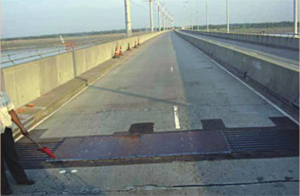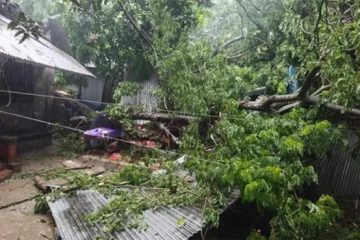Bangabandhu Bridge
Cracks not repaired in 5yrs
Experts fear this may reduce bridge’s lifespan, load carrying capacity
 The lifespan and load carrying capacity of the country’s longest Bangabandhu Multipurpose Bridge are being compromised, as successive governments failed in the last five years to repair cracks formed on it, according to experts and government officials, reports The Daily Star.
The lifespan and load carrying capacity of the country’s longest Bangabandhu Multipurpose Bridge are being compromised, as successive governments failed in the last five years to repair cracks formed on it, according to experts and government officials, reports The Daily Star.
The 4.8-kilometre bridge, connecting the country’s northern region with the capital over the Jamuna River, developed numerous cracks in 2006, just nine years after it had opened to public in 1997.
Experts said the cracks needed immediate repair, but till date the communications ministry could not select a contractor for the job, although it had invited tender thrice.
The Tk 4,000 crore bridge, with an expected lifespan of 100 years, was built by South Korean Hyundai Engineering and Construction Co Ltd.
But experts later found faults in Hyundai’s design and construction that had led to the emergence of the cracks.
Against such a backdrop, the communications ministry at a meeting with the experts at the Bridge Division on July 8 this year assigned an expert panel of Bangladesh University of Engineering and Technology (Buet) to carry out a thorough investigation of the bridge to learn about its latest condition.
Prof Jamilur Reza Chowdhury, who headed the first such investigation team in 2006 and recommended immediate repair detecting the design and construction flaws, told The Daily Star on Wednesday, “The real danger will be if water seeps into the cracks and affect the pre-stressing cables.”
If that happens, then both the lifespan and the load bearing capacity of the bridge might be compromised, he added.
He said the condition of the bridge has been deteriorating by the day, due to the delay in repair. “I recently heard some people saying that the cracks had expanded.”
The bridge allows motor vehicles and trains to get on it.
“I strongly recommended construction of a separate railway bridge on the western side of the existing bridge, since it is now unable to take the full load,” said Prof Chowdhury.
Khan Mahmud Amanat, a professor in the civil engineering department at Buet, who will be in the new investigation team, noted, “If the recommendations of Jamilur Reza Chowdhury were executed on time, the bridge would not be in such a bad condition now.”
About the delay in selecting a contractor for the repair work, Communications Minister Syed Abul Hossain told The Daily Star on Tuesday that his ministry is at the final stage of selecting a firm for the job.
“We are now evaluating finance offers from three firms — two Japanese and a Chinese —– and hope to issue work order by the end of this month,” he said adding that the bridge will be okay once the repairs are done.
“We were not in power when the cracks were detected. After assuming power we invited tender twice, but failed to find a suitable firm for the difficult job. This compelled us to go for the third tender which is going to be a successful one,” he said.
A Bridge Division official said the repair work may take three months to start, and a year to be finished.
The government cut vehicular speed and load limits by a half in 2006, in line with the recommendations of Prof Chowdhury led expert team.
The speed limit for trains had been 40 kilometres per hour in the original design, which was reduced to 20 km/h for passenger trains, and 16 km/h for freight trains, railway officials said.
Moreover, trains that use the bridge now cannot haul two engines, and freight trains must have empty containers in between loaded ones.
The maximum UDL [Uniformly Distributed Load] capacity of the bridge has also fallen.
“The UDL is now 43.7 kilo Newton [about 3.3 tons] per metre, which was higher in the original design,” Joint Director General of Bangladesh Railway Mohammad Shahjahan told The Daily Star last week.
Prof Amanat said, “The delay in repair will only reduce the lifespan of the bridge.”
Meanwhile, the government planned construction of two other railway bridges — one parallel to the Bangabandhu Bridge and the other near Bahadurabad Ghat — sensing that the Bangabandhu Bridge might be left out of the Trans-Asian Railway, Asian Highway, and other sub-regional connectivity routes due to its poor condition.




















